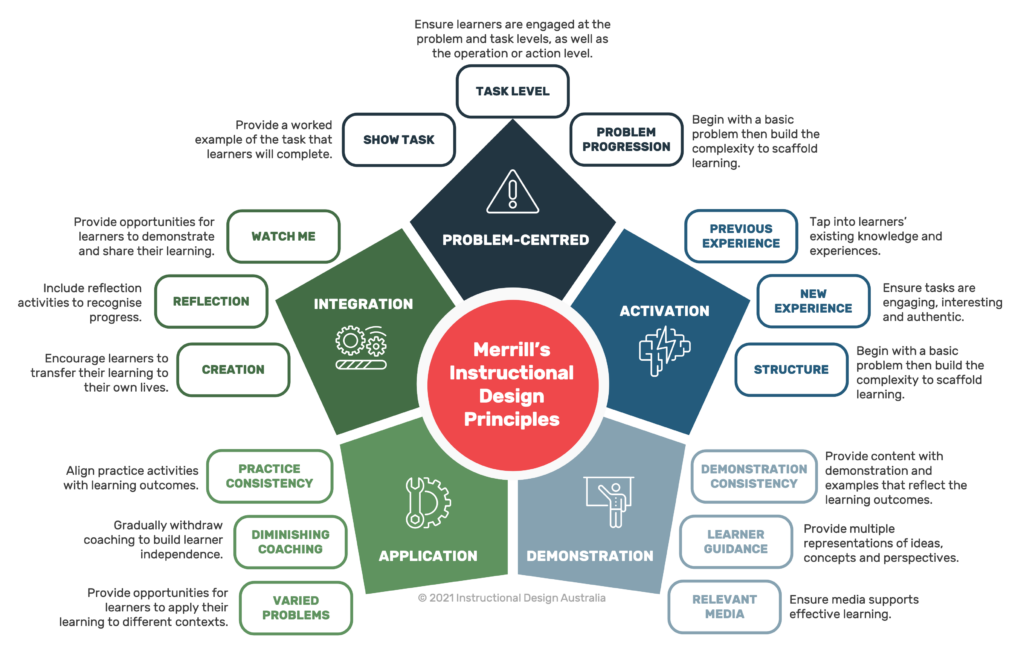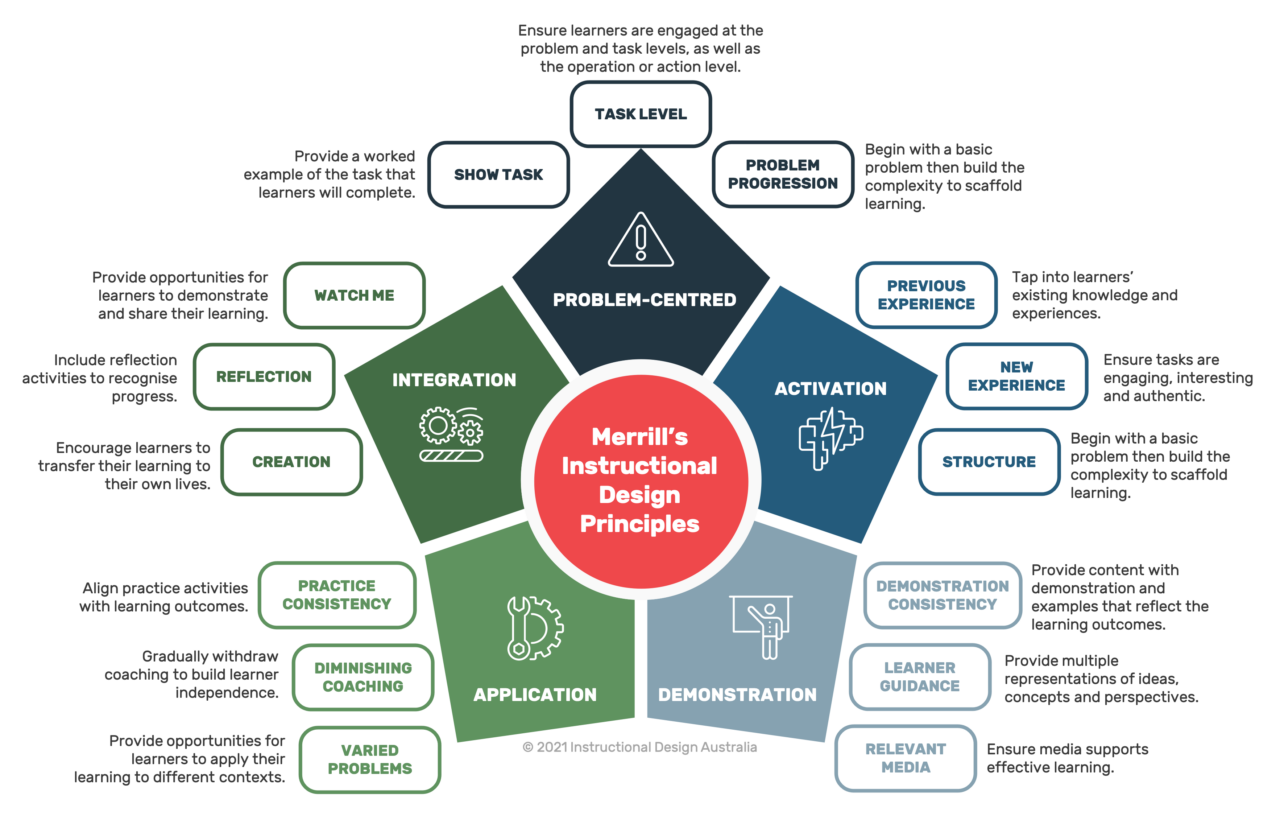Hi everyone! This week we learned about Merrill’s first principles of instruction, instructional design, and lesson planning. I wanted to discuss Merrill’s principles and how I would use them.
There is a scenario that immediately comes to mind where I have used Merrill’s principles of instruction. I am currently a visiting student at Athabasca University taking education courses, and for one class, I had to create a lesson plan and teach the lesson plan. The lesson was on globalization and how we can track where our T-shirts have been before arriving at our doorstep.

The learner and I engaged in solving this real-world problem about how globalization affects our everyday lives and how we wouldn’t have the things we do without globalization. The learners’ knowledge about importation and exportation was activated and served as a foundation for new knowledge about globalization (Greenwood, 2019). The learner and I then explored an interactive documentary, “Planet Money Makes a T-Shirt,” by National Public Radio (2013). The learner applied this knowledge to a quiz I had prepared for them (Greenwood, 2019). Throughout the documentary, I had the learner track every place the T-shirt visited before arriving at their doorstep by tracing lines between the locations on a map, thus integrating the new knowledge into the learners’ world (Greenwood, 2019).
As Merrill (2002) suggested, more than only media and multimedia is needed to promote learning. It requires activation, demonstration, and application, which I used in the planned lesson.
Lesson planning is an essential part of effective teaching. It is vital to create a lesson plan by considering your plan’s big ideas, learning outcomes, evidence of learning, assessment, and learning activities (Kurt, 2015). Considering these five items will help you create a lesson plan that is easy for you to follow and understand while teaching as it progresses. In addition, creating a plan will help ensure that your lesson includes the curriculum you intend to teach. Lesson planning also enables teachers to go back and review their lessons and consider what worked well, what didn’t work well, and what they would change for next time.
I hope you enjoyed the read 🙂
Amelia
References
Greenwood, J. (2019, December 19). Merrill’s first principles of instruction. James Greenwood. Retrieved October 10, 2022, from https://www.james-greenwood.com/instructional-design/toolkit/merrill/
Kurt, S. “Instructional Design Models and Theories,” in Educational Technology, December 9, 2015. Retrieved from https://educationaltechnology.net/instructional-design-models-and-theories/Dr. Serhat Kurt, Instructional Design Models and Theories. Sept 28, 2022.
Merrill, M. D. (2002). First Principles of Instruction. ETR&D, 50, 3. pp. 43-59.
National Public Radio. (2013). Planet money makes a T-shirt. NPR. Retrieved October 10, 2022, from https://apps.npr.org/tshirt/#/title

ashen
Hi Amelia,
Thanks for providing such a nice infographic of Merrill’s Principle of Instruction Design. This infographic is more concise and direct than “Merrill’s First Principle of Instruction ” from the reading content.
As for lesson planning that you have mentioned in the post, I’m wondering if it is helpful for choosing a course. The “big idea” can be what I want to learn for this course, then I would read the introduction for courses I’m interested in. Next, I could choose the most suitable course for me base on evidences of learning, assessments, and learning activities sections.
chuan09123
Hello Amelia,
Thank you for sharing your experience with course design. I also want to design my own courses in the future. The five items you mentioned are really helpful, however, I do often find myself having difficulties with learning activities. In my experience, I find that many students have their own ideas of learning and it’s hard to make a universal design for everyone. Therefore 1-to-1 teaching is currently my comfort zone.